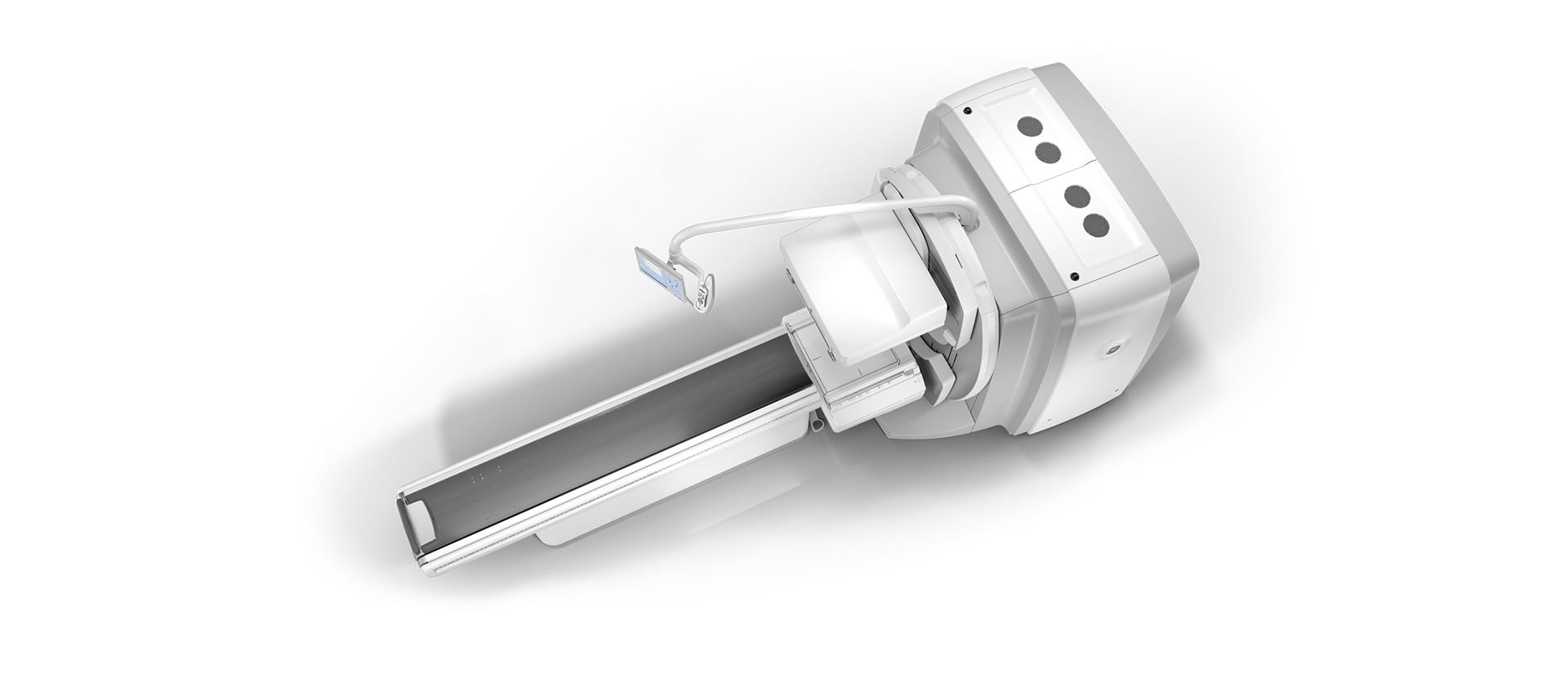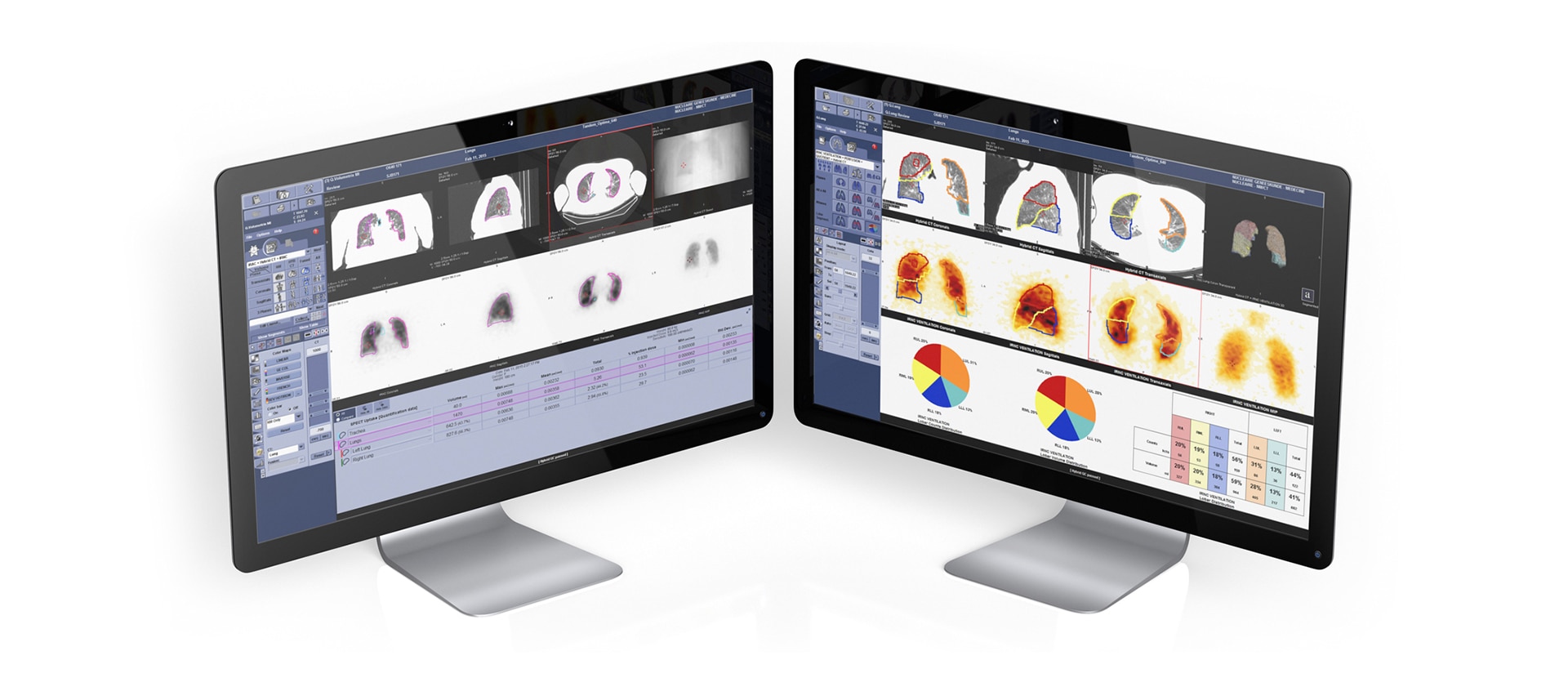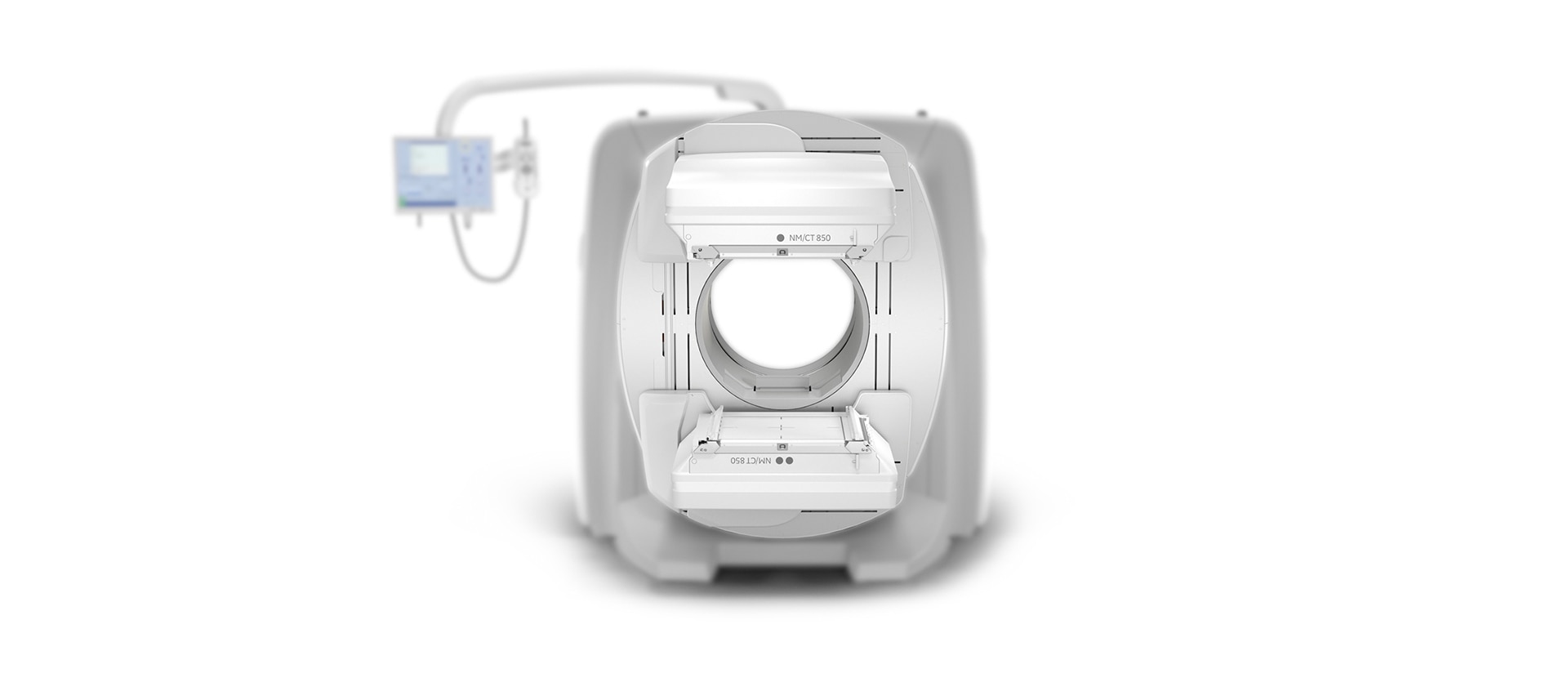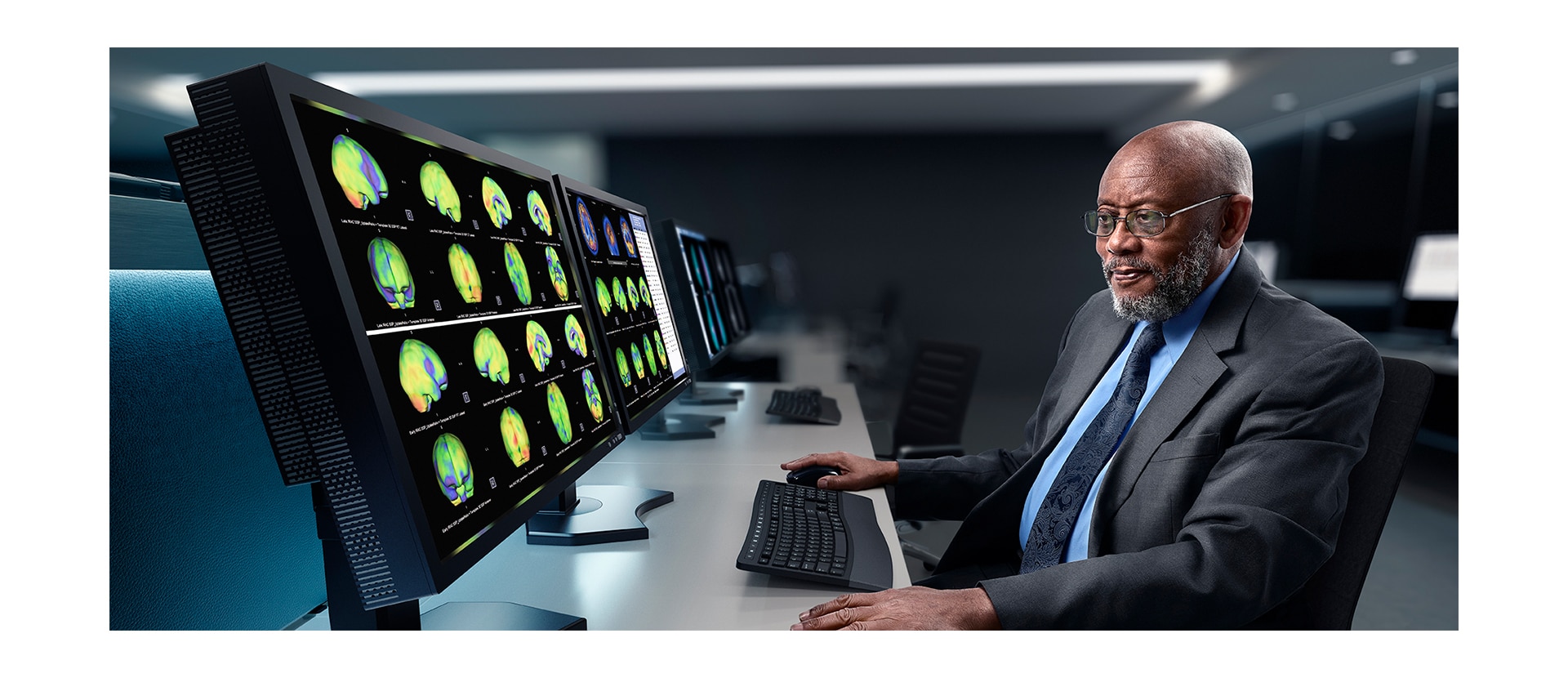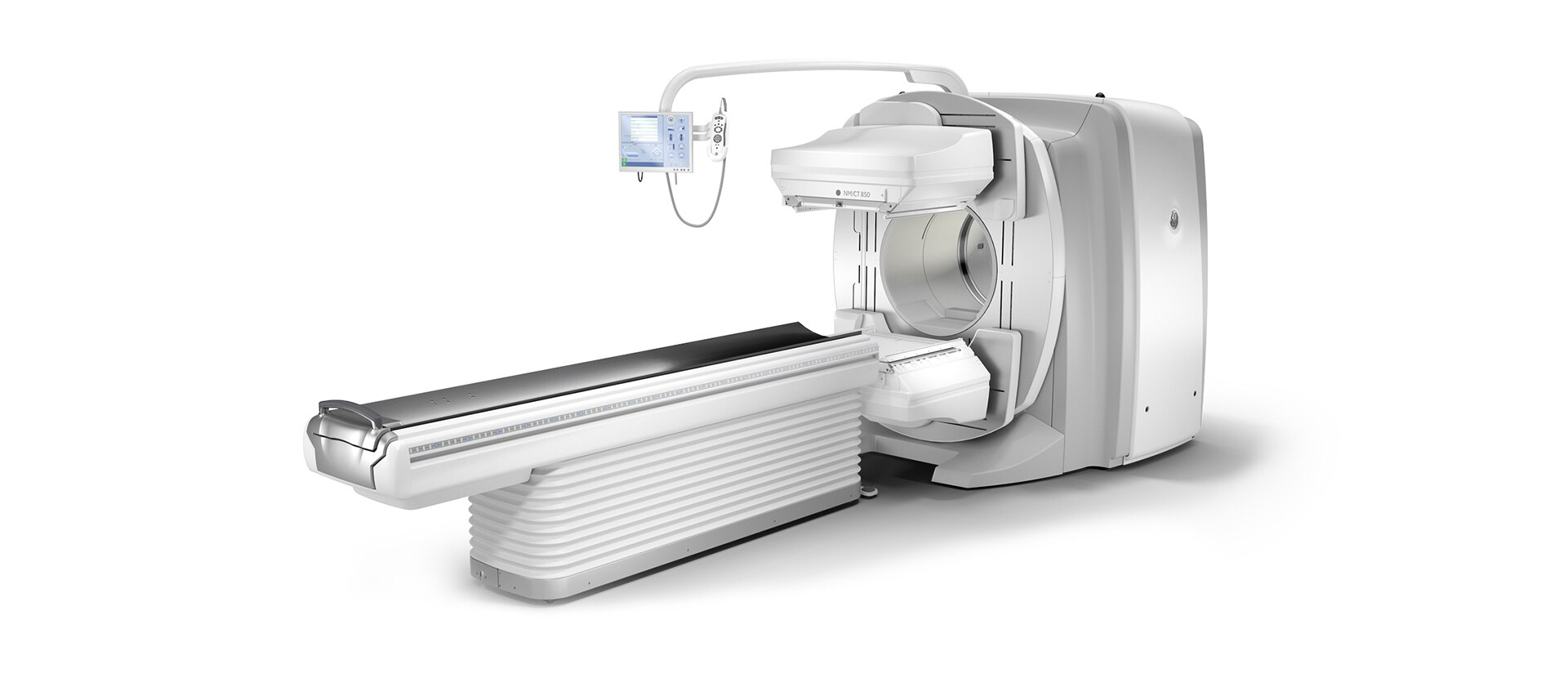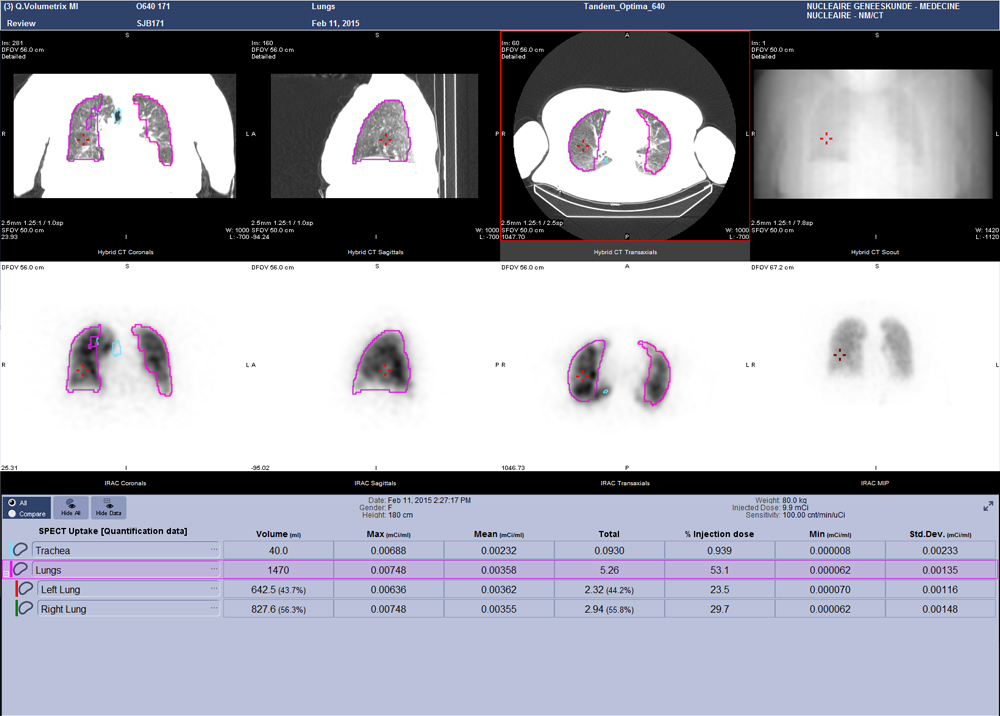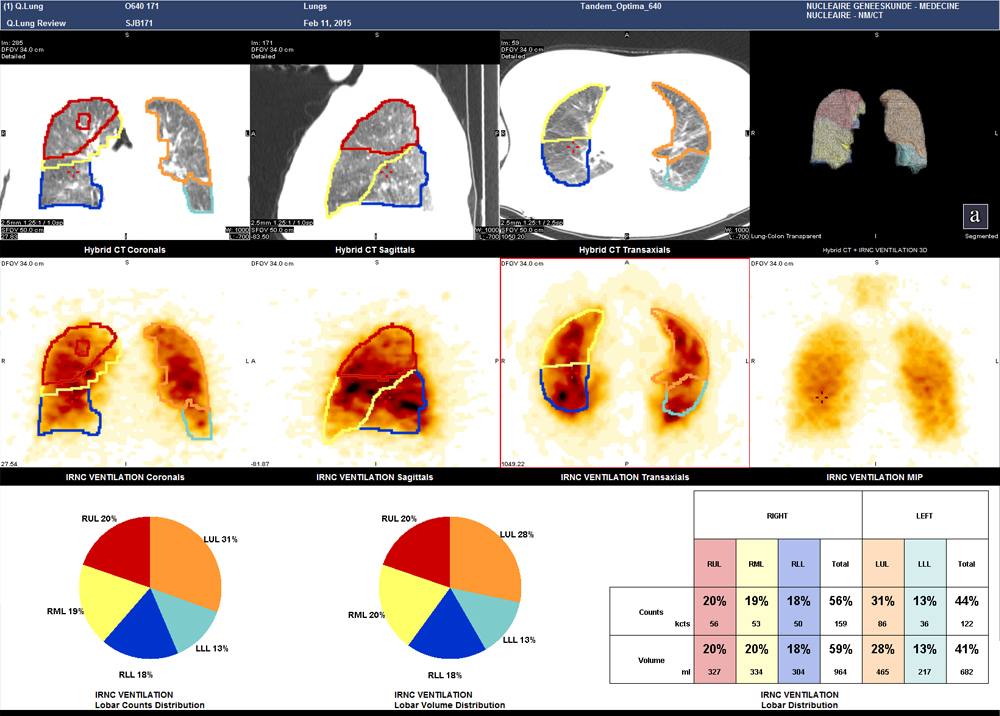technologyEngineered to inform
All our new 800 Series SPECT/CT systems build on the success of the 600 Series with a collection of SPECT technology
enhancements that add to the value of nuclear medicine. In addition to the all-new SmartConsole, these enhancements
include a new LEHRS (Low Energy High Resolution and Sensitivity) collimator, which can be combined with either
SPECT Step & Shoot Continuous scanning mode or our Planar Clarity 2D processing to increase sensitivity and enable
a reduction of scan times or injected dose1. It’s called SwiftScan Planar and SwiftScan SPECT. NM/CT 850 also includes
the Elite NXT detectors, designed to address some of nuclear medicine’s biggest challenges.
With the range of CT technology available today, you don’t necessarily need a high-powered, diagnostic CT to get the benefits of
anatomical information for your SPECT images. NM/CT 850 includes our Revolution™ ACTs CT system, which has been adapted to
provide the low-dose scanning specifically needed for localization and attenuation correction in nuclear medicine hybrid imaging.
It’s an eight-slice CT system with many of the image-quality-enhancing technologies that were previously limited to high-end,
diagnostic CT systems. It’s a much more compact system with the essential CT technologies you need to provide advanced
SPECT/CT exams without the extra cost and siting requirements of a 16-row detector CT.
capabilityOne diagnostic insight on top of another
NM/CT 850 combines the 800 Series SPECT enhancements with the thin-slice performance of Revolution ACTs to deliver
one diagnostic insight on top of another. You can increase confidence in your images with the improved specificity and sensitivity
of SPECT/CT over SPECT-only images. In addition, SmartConsole and Xeleris™ make more advanced hybrid and quantitative
protocols available in routine settings by reducing the resources needed to perform them. It’s all the clinical value of SPECT/CT, in
a smaller package. The perfect amount of capability to start detecting disease earlier with the potential to
add standalone diagnostic CT capabilities in the future.
future-readyA system that’s ready for the future when you are
NM/CT 850 shares the same modular design as the rest of the 800 Series family of nuclear medicine systems. They all share
a common user interface and collimators, which makes it easier both operationally and financially to upgrade to another
800 Series system or to add another system to your overall asset mix.
Its modular design also means you have the option to purchase SPECT advancements like SwiftScan Planar and SwiftScan SPECT
now, or in the future. In addition, NM/CT 850 has a small footprint that is easy to site in smaller rooms. And it has an easy upgrade
path to the standalone diagnostic CT capability of NM/CT 860 should your organization require it in the future.
quantitative applicationsInform your decisions with measurable results
The Xeleris workstation is our Nuclear Medicine, PET, NM/CT and PET/CT processing, analysis and review system. It’s designed
to leverage the latest in SPECT quantitative applications for routine clinical use, accelerate workflow and improve diagnostic
confidence. It also opens the door to the new era of digital healthcare delivery through its potential to access the GE Health Cloud
and with advanced applications to help solve some of the most complex clinical presentations.
summaryA SPECT/CT system for true discovery
Molecular imaging is unlike any other imaging technology because it enables the search for true discovery. It’s the type of
discovery that reveals a new way to understand something hidden deep within us. It’s what inspires confidence in the accuracy
of what you see and in your ability to find disease sooner. It’s this diagnostic confidence that strengthens the value of
nuclear medicine throughout the healthcare community.
Continuing to grow the clinical value of SPECT/CT technology takes as much of a commitment from the people who use it as it
does from the people who make it. You, like us, are committed to making true discovery even more accessible to the patients you
serve. It’s why we partnered with you to better understand what your financial and operational challenges might be. It’s also why
we created NM/CT 850 to help you overcome those challenges, so you can continue to pursue true discovery.
